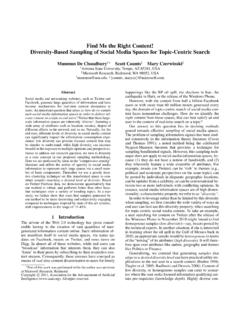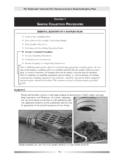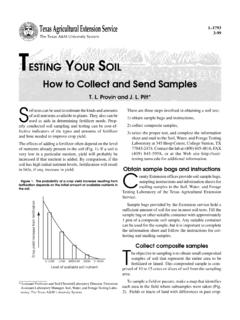Transcription of The Use of Stratified Sampling of Blend and Dosage Units ...
1 The Use of Stratified Sampling of Blend and Dosage Units to Demonstrate adequacy of Mix for Powder Blends1. Garth Boehm, Jon Clark, John Dietrick, Laura Foust, Thomas Garcia, Muralidhara Gavini, Loren Gelber, Jean-Marie Geoffroy, Pedro Jimenez, Gerald Mergen, Fernando Muzzio, Jerry Planchard, James Prescott, Jozef Timmermans, Neeru Takiar Abstract In response to concerns expressed by applicants regarding inconsistent policies in establishing Blend uniformity acceptance criteria to demonstrate adequacy of mix, the FDA Office of Generic Drugs (OGD) issued the draft document Guidance for Industry, ANDAs: Blend Uniformity Analysis (August 1999)2. Both generic and innovator pharmaceutical companies raised a number of concerns following the publication of this document. As a result, the Product Quality Research Institute (PQRI) Blend Uniformity Working Group (BUWG) was established in February 2000.
2 One of the primary goals of this group was to draft a scientifically based alternative to the OGD document. The resulting recommendation addresses both FDA and industry concerns by substantially enhancing product quality assurance without increasing regulatory burden. The PQRI BUWG recommends that these Blend and Dosage unit uniformity requirements be administered uniformly throughout the industry. PQRI submitted the following recommendation to the FDA on December 31, 2002, providing the Agency with an alternative strategy to consider when drafting future regulatory policy to assess Blend and Dosage unit uniformity. PQRI Recommendation I. Scope This proposal is meant to address concerns raised following the issuance of the FDA document Guidance for Industry, ANDAs: Blend Uniformity Analysis, (August 3, 1999) as it relates to filing requirements and post-approval commitments.
3 It applies to both ANDA and NDA solid oral drug products. It does not apply to those drug products where the determination of Dosage - form uniformity by weight variation is allowed. This proposal is applicable to active ingredient(s) contained in the Blend . The approach described in this document is proposed as a means to satisfy the cGMP requirement for in-process testing to demonstrate adequacy of mix, 1. The proposals in this document assume that an on-line, in-process measurement system is not currently available for demonstrating Blend uniformity ( , on-line NIR measurement of in- process Blend or Dosage Units ). 2. Document was recalled by FDA in May 2002. as well as USP compendial requirements for the content uniformity of finished Dosage forms. Alternatively, traditionally employed methods (such as the direct Sampling and analysis of powder blends, in conjunction with content uniformity testing of finished Dosage forms) may continue to be used to satisfy cGMP and compendial testing requirements.
4 Additionally, on-line measurement systems may also be used to demonstrate uniformity ( , NIR. measurement of in-process Blend samples or Dosage Units ). II. Definitions Stratified Sampling is the process of selecting Units deliberately from various locations within a lot or batch or from various phases or periods of a process to obtain a Stratified Sampling of the Blend and Dosage Units specifically targets locations either in the blender or throughout the compression/filling operation, which have a higher risk of producing failing content uniformity results. Potency refers to the content of drug substance (also referred to as active ingredient) present in the tested Dosage unit . Alternate methods of analysis for the content of drug substance, such as a quantitative spectrophotometric method, may be used in place of a more elaborate HPLC method. To weight correct is to adjust the Dosage unit potency result to eliminate the unit weight effect.
5 This method is used to demonstrate Blend uniformity using Dosage unit results. For example, a tablet with potency of mg and weight of 98 mg = 98 = mg/mg. Label claim is 20 mg per each 100 mg tablet, so the weight corrected result is * 100 = 99% of target Blend potency. Unless otherwise specifically stated, all Dosage unit potencies are to be weight corrected prior to evaluating the acceptance criteria described in this document. All weight-corrected potencies are to be expressed as a percentage of the Blend target concentration. Calculations to satisfy compendial testing requirements and the criteria for individual Dosage Units stated in Attachment 1 are not weight corrected. Further, the potencies are expressed as a percentage of the label concentration. Absolute as used to define the acceptable range (+/- 10%) in which individual Blend sample values must fall is independent of the value of the mean.
6 For example, if the mean of all Blend samples is , the absolute range is 85- 105%, (not 95 +/- ). 3. Glossary and Tables for Statistical Quality Control, ASQC Quality Press, copyright 1983. ANDA Exhibit Batches refer to any batch submitted in support of an ANDA. This includes bioequivalence, test and commercial production batches of a drug product. Compendial testing mentioned in this document refers to USP <905> Uniformity of Dosage Units , by Content Uniformity. RSD is relative standard deviation. RSD = [(standard deviation)/(mean)] x 100%. III. Background In response to concerns by ANDA applicants regarding inconsistency in review chemists' recommendations, the FDA published a draft guidance in August The guidance proposed routine Blend sample analysis on commercial batches for ANDA products when USP Content Uniformity testing is required on the product. As a result of industry feedback on this draft guidance, a primary goal of the Product Quality Research Institute (PQRI) Blend Uniformity Working Group (BUWG) was to address the gap between scientific principles and the regulatory policy stated in this document.
7 In September 2000, the working group sponsored a workshop on Blend uniformity. At the conclusion of the workshop, it was recognized that limitations in current Sampling technology and subsequent handling (powder segregation) might limit the effectiveness of using Blend sample analysis to ensure adequacy of blending. Alternative solutions were sought to address the shortcomings of Sampling and analyzing blends. The PQRI BUWG felt that any solution should possess the following three qualities: 1. The test should be simple to perform, maximizing the use of the data. 2. Acceptance criteria should be easy to evaluate and interpret. 3. Acceptance criteria should demonstrate when lack of homogeneity is suspected. In-process Dosage unit analysis (of tablet cores, hard gelatin capsules, or other solid dose forms) is proposed as an alternative to routine Blend sample analysis.
8 Current GMPs state control procedures shall include adequacy of mixing to assure uniformity and homogeneity. [21 CFR (a)(3)]. Dosage unit analysis satisfies this in-process control requirement by indirectly measuring the uniformity of the Blend by Sampling and testing in-process Dosage Units . Stratified Sampling techniques are employed to collect in-process Dosage Units throughout the compression or filling process. In-process Dosage unit analysis has many positive aspects: 4. Guidance for Industry, ANDAs: Blend Uniformity Analysis (August 3, 1999), which was subsequently withdrawn by FDA in May 2002. It is an accurate and reflective measure of homogeneity of the product. It eliminates Blend Sampling error issues related to thief Sampling . It applies resources where they produce reliable, accurate information about the quality of the product given to the patient. Weighing errors during Blend sample analysis are eliminated.
9 It removes the safety issues surrounding Blend Sampling of toxic or potent drugs manufactured in isolated environments. It accounts for potential segregation after blending. The following proposal presents strategies for in-process Dosage unit analysis and Blend sample analysis. The PQRI BUWG advocates the use of the proposed strategy defined in Section V or Attachment 1 during the manufacture of ANDA exhibit batches, and both ANDA and NDA batches during the validation of the commercial manufacturing process. The rationale for each sample size and acceptance criteria for the proposal contained in Attachment 1 are provided in Attachments 2 and 3. If this proposal is used to test the exhibit and/or commercial scale validation lots, and the results comply, then it may be sufficient to perform Stratified Sampling and analysis of in-process Dosage Units for commercial batches in lieu of Blend Sampling and analysis advocated in the draft ANDA Blend uniformity guidance document.
10 The level of testing required to satisfy cGMP requirements would be dependent on the quality of the data generated by testing the batches in accordance with the proposal. For those products that readily pass the defined acceptance criteria, a modification of the USP Content Uniformity Test may be used to satisfy the cGMP requirement for routine monitoring of production batches for adequacy of mix (see Section VI and Attachment 4). Processes that do not readily pass would require additional testing for routine production batches. IV. Process Development In general, content uniformity of the final Dosage form is dependent on the homogeneity of the powder mixture in the blender. The development of robust blending and transfer processes that will not cause post-blending segregation of the mixture and thus result in manufacture of a product of acceptable content uniformity remains a critical objective during formulation and process development.
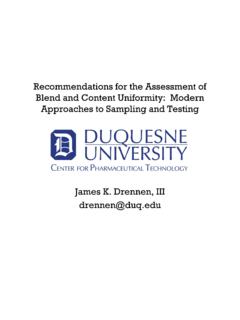
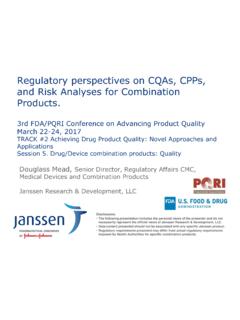
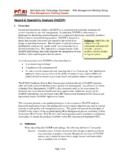
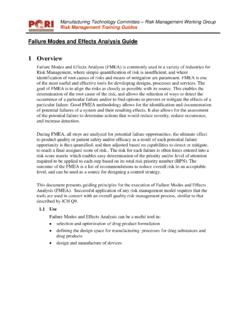
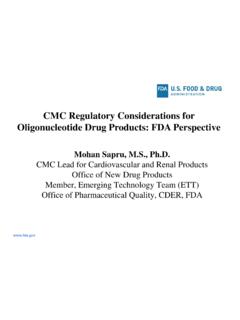

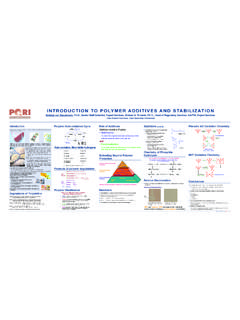

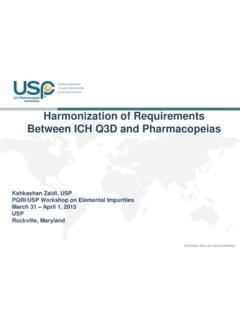
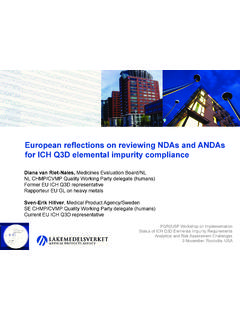
![[PDF] XDM Quad Single-Use Mixing System DATA SHEET](/cache/preview/c/3/6/4/b/f/9/e/thumb-c364bf9ea947704074f9743161b874c0.jpg)
